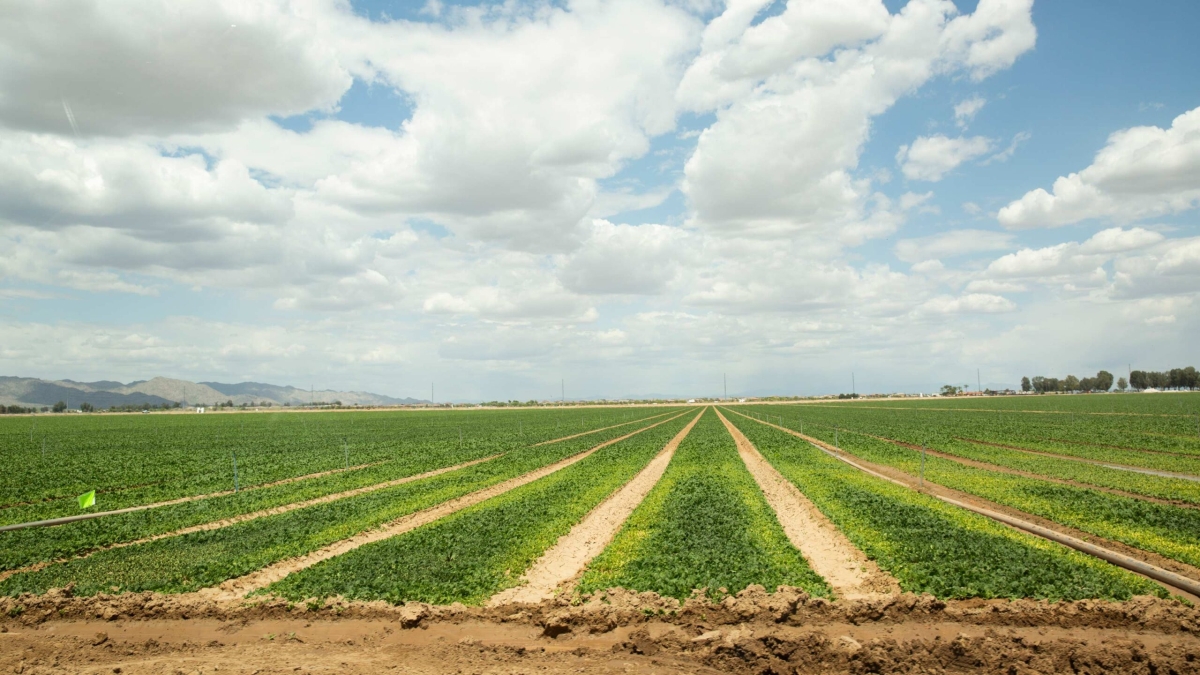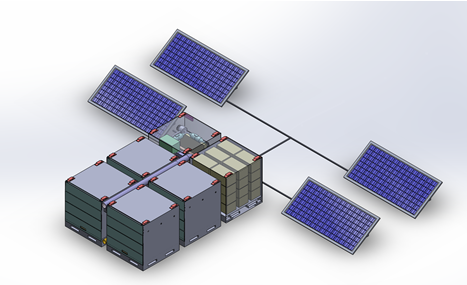American agriculture has been consolidating for decades. Farms have dwindled in number as they have grown in scale, and the same is true of businesses that process and distribute food. Forces driving this shift include technological advances that improve efficiencies and reduce costs, but those mainly benefit larger operations that can afford to adopt them.
Countering this broad trend, recent agricultural research suggests that emerging precision technologies offer hope for smaller operations. Novel systems that collect, analyze and apply detailed information to better connect farm production and markets for fresh produce could yield crucial benefits for small growers.
“Our current food supply chain is complicated by networks of intermediaries between the farmers and the final consumers,” says Rene Villalobos, an associate professor of industrial engineering in the Ira A. Fulton Schools of Engineering at Arizona State University. “The system stocks supermarkets and supplies restaurants, but it also erodes the profitability of small producers, generates enormous waste and creates other problems.”
Villalobos has devoted 15 years to studying the commercial food supply chain with the goal of addressing these problems. The yield of his extensive work is a project called Terra-Fresh, which stands for technology-enabled, rapid response, fresh supply chains.
“It’s a platform or an environment that applies market intelligence to identify opportunities related to demand for fresh produce, and then coordinates action in a way that benefits small growers, consumers and the environment,” Villalobos says.
One key element or module of the platform involves gathering and analyzing data about current wholesale volumes and prices for fresh produce. Villalobos says this information includes U.S. Department of Agriculture reports of recent transactions across multiple metropolitan markets.
“We also look at customs data for import volumes of various crops,” he says. “That’s significant because the import market generally reacts to demand shifts before they register in the general wholesale market. So, it can point to emerging opportunities.”
Additionally, Villalobos says Terra-Fresh monitors online sources — including search engine keyword searches and relevant social media activity — to capture trends that point to new demand for fresh produce.
Advanced statistical modeling brings all of these layers together to reveal anomalies that small-scale farmers in specific regions could translate into profitable output by adjusting production plans over the subsequent three to 12 months.
“Determining which region or regions are able to benefit from a particular emerging opportunity is the focus of our second module,” Villalobos says. “Only certain areas will have the production potential to meet a given new demand.”
Consequently, Terra-Fresh is developing technical feasibility tools including maps that depict — in green, for example — growing regions with substantial environmental potential to seize a specific opportunity. Regions with conditions less suited to production for a given demand are shown in yellow or brown.
“These are generalizations,” Villalobos says. “But behind these displays are optimization models that incorporate thousands of relevant variables and constraints that can be applied to inform better decisions, higher profits and less waste.”
Other modules in development will evaluate the financial feasibility of pursuing identified opportunities and enable the formation of virtual enterprises through which growers can collectively respond to emerging trends. Finally, there will be tools to improve opportunity-specific supply chain planning and deployment.
The Terra-Fresh project is a collaboration that Villalobos is leading with peers at ASU and at New Mexico State University, with grant funding from the Foundation for Food and Agriculture Research, a division of the U.S. Department of Agriculture that supports the development of innovative solutions for pressing challenges in food and agriculture systems.
Another important aspect of Terra-Fresh addresses a physical challenge faced by growers who have only small lots of produce to deliver to the supply chain. Refrigerated shipping containers that transport fresh fruit and vegetables often measure 8 feet wide, 9 feet high and 40 feet long. Simultaneously, government regulations to combat foodborne illnesses require precise traceability and the segmentation of batches or lots of produce by source to avert cross-contamination.
The combination of these two factors is not a problem for a large-scale farm loading cartons of cucumbers that total 18 tons. But a smaller grower with just a few hundred pounds of green beans needs an alternate route to market.
“So, we have designed mini-containers or cubes that measure approximately 4 feet on each side,” Villalobos says. “They each can supply the ideal temperature, humidity and other environmental conditions required to preserve 400 to 1,000 pounds of a specific crop, such as bell peppers or spinach, during shipment.”
A rendering of the Freskube design. Photo courtesy of freshkube.com
The mini-containers will be aggregated into groups of 36 — stacked two high, two across and nine deep — to mirror the overall dimensions of conventional shipping containers and meet the standards of existing logistics systems. This configuration also enables the cubes to efficiently share central atmospheric control systems while maintaining the traceability and preventing the cross-contamination of small lots of fresh produce. Simultaneously, their smaller volumes reduce energy use and extend product shelf-life to reduce food waste.
Villalobos says he and his colleagues are now at a critical threshold in the development of the Terra-Fresh project. He says they need substantive input from the grower and food supply chain communities, and they want to initiate partnerships to validate their current models and move the platform toward commercialization.
To that end, they are hosting a meeting at ASU’s SkySong Innovation Center and via Zoom on Jan. 14, 2022, to present detailed information about the current state of the project and to discuss opportunities for industry engagement. Learn more and register at Terra-Fresh Symposium: Connecting Small Growers to Fresh Produce Markets.
More Science and technology

ASU-led space telescope is ready to fly
The Star Planet Activity Research CubeSat, or SPARCS, a small space telescope that will monitor the flares and sunspot activity of low-mass stars, has now passed its pre-shipment review by NASA.…

ASU at the heart of the state's revitalized microelectronics industry
A stronger local economy, more reliable technology, and a future where our computers and devices do the impossible: that’s the transformation ASU is driving through its microelectronics research…

Breakthrough copper alloy achieves unprecedented high-temperature performance
A team of researchers from Arizona State University, the U.S. Army Research Laboratory, Lehigh University and Louisiana State University has developed a groundbreaking high-temperature copper alloy…



